What is Combination Skin?
Combination skin is a skin type that presents with an oily T-zone (forehead, nose, and chin) and dry cheeks. It is a common skin condition that many individuals deal with, and it can be challenging to find the right skincare routine and products to balance the different areas of the face.
The T-zone tends to be oily due to the higher concentration of sebaceous glands in those areas, while the cheeks often appear dry and flaky. Combination skin is defined as a mix of oily and dry skin on different parts of the face, making it a unique skin type that requires special care.
How to Know if You Have Combination Skin
If you’re unsure whether you have combination skin, there are several telltale signs to look out for:
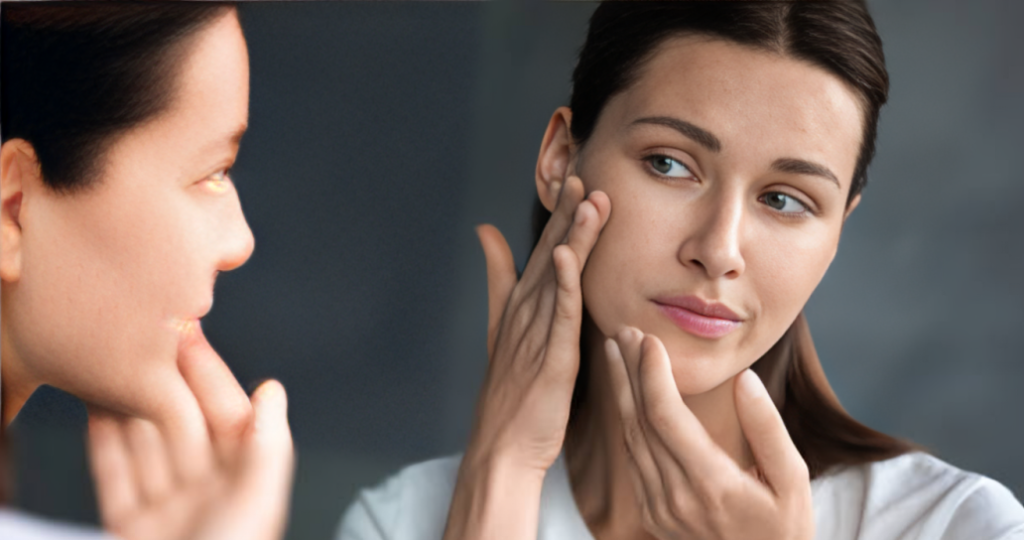
Oily T-zone: Your forehead, nose, and chin appear shiny and greasy, even after cleansing. You may notice that blotting papers quickly absorb oil from these areas throughout the day.
Dry cheeks: Your cheeks feel tight, flaky, and dehydrated, even when the rest of your face is oily. The skin on your cheeks may appear dull and rough, and you may experience discomfort or tightness after cleansing.
Shiny forehead: Your forehead often looks shiny and reflects light, even when the rest of your face appears normal or matte. This shininess can be more pronounced during the middle of the day or after being active.
Visible pores: Your pores may appear enlarged and clogged, especially in the T-zone area. This is due to the excess oil production and buildup of sebum, dead skin cells, and other impurities.
Uneven texture: You may notice that your skin texture varies across different areas of your face, with some parts appearing smooth and others feeling rough or bumpy.
If you experience any of these symptoms consistently, it’s likely that you have combination skin. However, it’s important to note that combination skin can vary in severity and presentation from person to person.
What Causes Combination Skin?
Combination skin can be caused by a variety of factors, both internal and external. Understanding these causes can help you better manage and treat your combination skin.
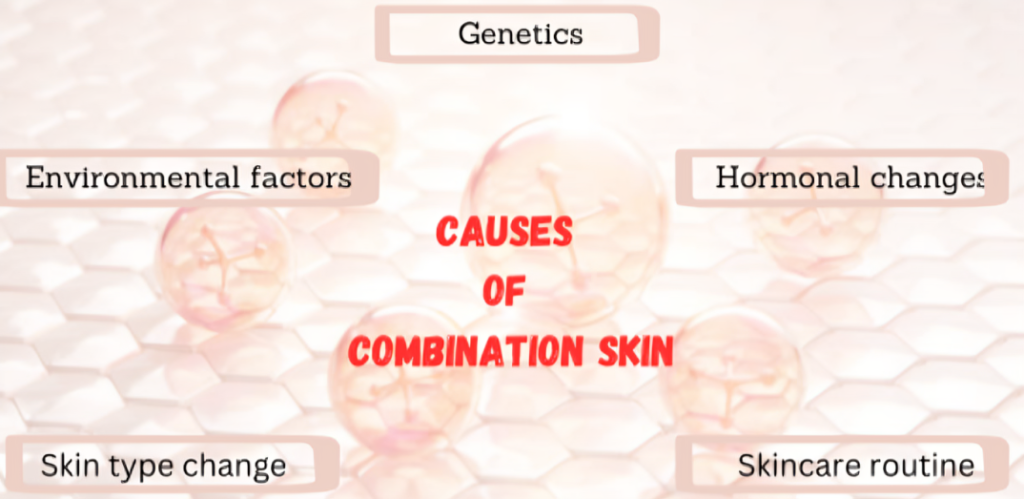
- Hormonal changes: Fluctuations in hormones, such as during puberty, menstrual cycles, pregnancy, or menopause, can lead to an imbalance in oil production. Hormones like androgen can stimulate the sebaceous glands, leading to increased oil production in the T-zone.
- Genetics: Your skin type can be inherited from your parents and family members. If one or both of your parents had combination skin, you may be more likely to develop this skin type as well.
- Environmental factors: Exposure to pollution, stress, and harsh weather conditions can contribute to the development of combination skin. Pollution and stress can trigger increased oil production, while dry or cold climates can exacerbate dryness in certain areas of the face.
- Skin type changes: Your skin type can change over time due to aging, lifestyle factors, and other variables. As we age, our skin tends to produce less oil, leading to dryness. However, some individuals may experience a shift towards combination skin as they get older.
- Skincare routine: Using the wrong products or following an unbalanced skincare routine can also contribute to combination skin. For example, using overly drying cleansers or skipping moisturizer can disrupt the skin’s natural oil balance, leading to an uneven texture and appearance.
Understanding the potential causes of your combination skin can help you better address and manage the condition through targeted skincare routines and lifestyle changes.
How to Treat Combination Skin
Treating combination skin requires a balanced approach to address both the oily and dry areas of the face. Here are some tips to help you achieve a more even, radiant complexion:
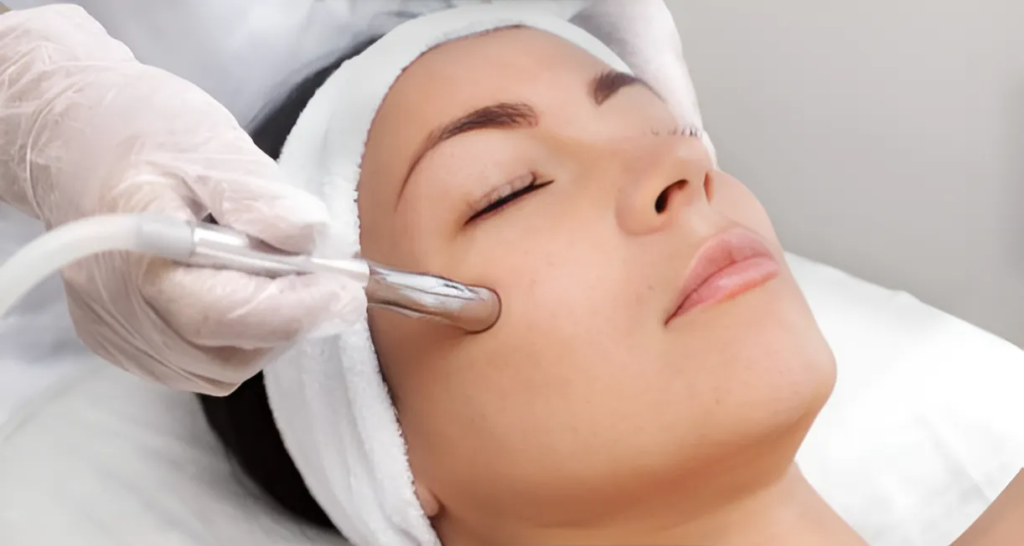
Treating the oily T-zone
Use oil-absorbing products, such as clay masks or blotting papers, to control shine and excess oil in the T-zone area.
Incorporate salicylic acid or benzoyl peroxide products to help unclog pores and prevent breakouts in the oily areas.
Opt for mattifying or oil-free moisturizers specifically formulated for oily skin types to hydrate without adding excess shine.
Consider using an astringent toner after cleansing to help remove excess oil and tighten pores in the T-zone.
Treating dry cheeks
Incorporate hydrating and nourishing products, like gentle moisturizers and facial oils, to keep the cheeks supple and moisturized.
Look for moisturizers containing ingredients like hyaluronic acid, glycerin, or ceramides to help boost hydration and strengthen the skin’s barrier.
Consider using a hydrating serum or facial mist to provide an additional boost of moisture throughout the day.
Exfoliate regularly with a gentle scrub or chemical exfoliant to slough off dead skin cells and improve moisture absorption.
Managing acne
Incorporate acne-fighting ingredients like salicylic acid or benzoyl peroxide to help control breakouts in the oily areas.
Use a gentle, non-comedogenic moisturizer to hydrate the skin without clogging pores.
Avoid heavy, greasy products that can further contribute to clogged pores and breakouts.
Reducing enlarged pores
Use pore-minimizing products containing ingredients like retinol, niacinamide, or vitamin C to help refine the appearance of pores.
Exfoliate regularly to keep pores clear and minimize their appearance.
Avoid heavy, pore-clogging makeup and opt for non-comedogenic formulas instead.
Balancing combination skin
Look for products labeled “for combination skin” or “balancing” to help regulate oil production and hydration levels across different areas of the face.
Incorporate multi-tasking products like tinted moisturizers or BB creams that can provide coverage while also addressing specific skin concerns.
Consider using different products for different areas of your face, such as a mattifying moisturizer for the T-zone and a richer cream for the cheeks.
Remember, consistency is key when treating combination skin. It may take some trial and error to find the right combination of products and techniques that work best for your unique skin type and concerns.
Combination Skin Care Routine
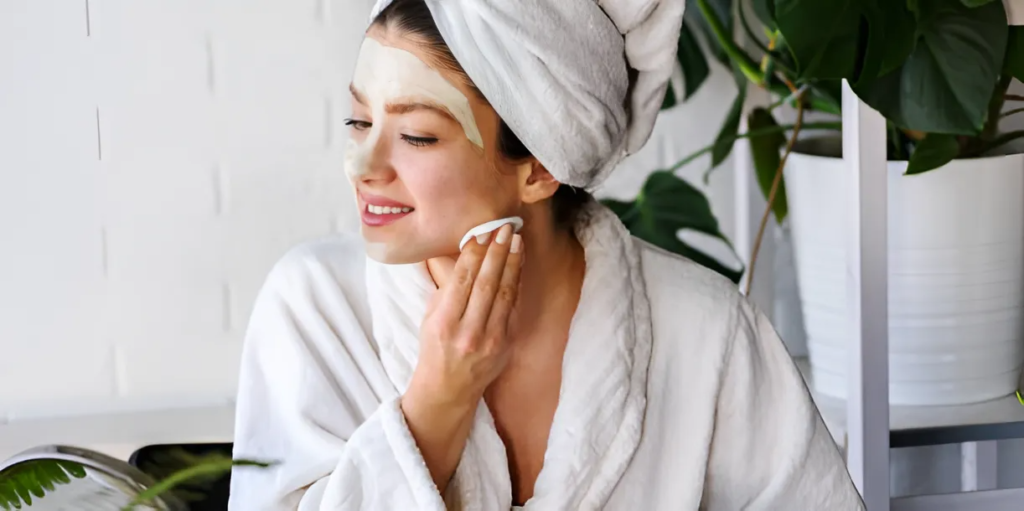
AM Routine
- Cleanse: Start your morning by cleansing with a gentle, non-foaming face wash or micellar water. Avoid harsh, stripping cleansers that can disrupt your skin’s natural oil balance. Look for formulas containing mild surfactants like glycerin or coconut-derived cleansers. Gently massage the cleanser into damp skin using circular motions, focusing on the oily T-zone. Rinse thoroughly with lukewarm water.
- Tone: After cleansing, apply an alcohol-free toner to help restore the skin’s pH balance and prepare it for better product absorption. Look for toners with soothing ingredients like rosewater, green tea, or botanical extracts. Avoid toners with high concentrations of alcohol, as these can be overly drying for combination skin.
- Serum: Apply a lightweight, oil-free serum to target specific concerns. For combination skin, look for serums with ingredients like vitamin C to brighten, niacinamide to control oil and minimize pores, or hyaluronic acid to boost hydration. Gently pat the serum into the skin using your fingertips.
- Moisturize: Combination skin requires a strategic approach to moisturizing. Use an oil-free, gel-based moisturizer on the T-zone to hydrate without adding excess shine or clogging pores. On the drier cheek areas, apply a slightly richer, cream-based moisturizer to nourish and replenish moisture. Look for moisturizers labeled “oil-free” or “non-comedogenic” to avoid clogging pores.
- Sunscreen: Finish your morning routine with a broad-spectrum, non-comedogenic sunscreen with an SPF of 30 or higher. Sun exposure can cause excess oil production and exacerbate dryness, so daily sun protection is crucial for combination skin. Look for lightweight, oil-free formulas that won’t leave a greasy residue.
PM Routine
- Remove Makeup: Start by removing any makeup, dirt, or impurities from the day using a gentle, non-drying makeup remover or micellar water. Avoid harsh, oil-based removers that can clog pores or leave a greasy residue.
- Double Cleanse: After removing makeup, follow up with a mild, foaming face wash or gel cleanser to deeply cleanse the skin. Look for formulas containing ingredients like salicylic acid or tea tree oil to help control oil and keep pores clear. Gently massage the cleanser into damp skin, focusing on the oily areas, and rinse thoroughly with lukewarm water.
- Tone: Reapply your alcohol-free toner to restore the skin’s pH balance and prepare it for further treatment products.
- Treatment: Depending on your specific concerns, apply any targeted treatment products at this step. For blemishes, use a spot treatment containing benzoyl peroxide or salicylic acid. For anti-aging, incorporate a retinol serum or vitamin C serum. For the oily T-zone, consider using a clay mask once or twice a week to absorb excess oil and unclog pores.
- Moisturize: Finish your evening routine with a lightweight, oil-free moisturizer or night cream to replenish hydration and support the skin’s regeneration process overnight. Look for moisturizers containing ingredients like ceramides or plant-based oils like argan or rosehip to nourish without clogging pores.
Additional Tips
- Exfoliate 1-2 times per week with a gentle scrub or chemical exfoliant containing alpha-hydroxy acids (AHAs) or beta-hydroxy acids (BHAs). This will help slough off dead skin cells, unclog pores, and improve overall texture and radiance.
- Use blotting papers throughout the day to absorb excess oil from the T-zone without disrupting your makeup or drying out other areas of the face.
- When it comes to makeup, opt for oil-free, non-comedogenic products that are specifically formulated for combination skin. Look for foundations, concealers, and powders labeled “mattifying” or “oil-free” to avoid clogging pores in the oily areas.
- Stay hydrated by drinking plenty of water and consider incorporating hydrating foods like cucumbers, watermelon, and berries into your diet. Dehydration can contribute to excess oil production and dryness.
- Manage stress levels, as stress can trigger hormonal imbalances that exacerbate combination skin issues. Practice relaxation techniques like yoga, meditation, or deep breathing exercises.
Remember, everyone’s skin is unique, so it may take some trial and error to find the perfect combination of products and routine that works best for your individual needs. Be patient and make adjustments as needed based on your skin’s response. Consistency is key when it comes to maintaining a healthy, balanced complexion with combination skin.
What is Not Ideal for Combination Skin
While addressing combination skin, it’s important to avoid certain products and practices that can exacerbate the problem or cause further imbalance:

Heavy, greasy moisturizers or creams: These can clog pores and worsen oiliness in the T-zone, leading to breakouts and a shiny appearance.
Harsh, drying cleansers: While it may be tempting to use a strong cleanser to remove excess oil, these can strip the skin of its natural oils, leading to overcompensation and increased oil production.
Skipping moisturizer: Even oily areas need hydration, so avoid skipping moisturizer altogether. This can lead to excessive dryness and an overproduction of oil to compensate.
Over-exfoliating: While regular exfoliation is important for combination skin, excessive exfoliation can disrupt the skin’s barrier and lead to dryness, irritation, or increased oil production.
Using the same products all over the face: Combination skin requires a targeted approach, so using the same products on both the oily and dry areas can lead to an imbalance.
Not removing makeup properly: Leaving makeup on overnight or not cleansing thoroughly can clog pores and contribute to breakouts, especially in the oily areas.
Neglecting sun protection: Both oily and dry skin types are susceptible to sun damage, so it’s important to use a broad-spectrum sunscreen daily to protect your skin.
By avoiding these common mistakes, you can help maintain a healthy balance and prevent further complications with your combination skin.
Makeup Techniques for Combination Skin
- Primer: Use a mattifying primer in the T-zone to control shine and a hydrating primer on the cheeks to nourish dry areas.
- Foundation: Choose a lightweight, oil-free foundation that won’t clog pores or appear cakey on dry patches.
- Blotting papers: Keep blotting papers on hand to absorb excess oil throughout the day without disrupting your makeup.
- Setting powder: Use a finely milled, translucent setting powder to help control shine and prolong the wear of your makeup.
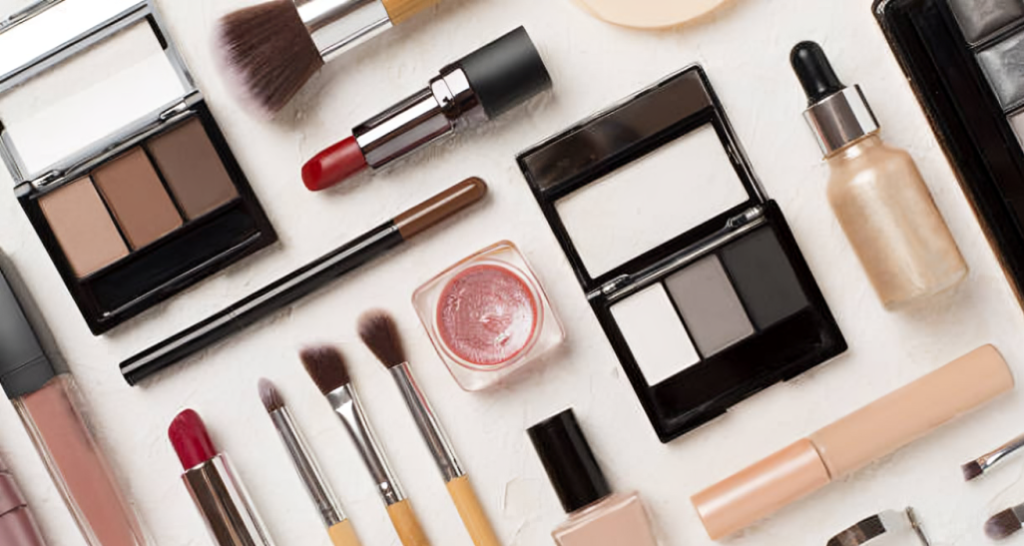
Best Moisturizer for Combination Skin
Look for a lightweight, oil-free moisturizer that can hydrate without clogging pores. Gel-based or water-based moisturizers are ideal for the oily T-zone, while cream-based formulas can be used on the drier cheek areas. Ingredients like hyaluronic acid, glycerin, and ceramides can help balance hydration levels across the face.
Best Foundation for Combination Skin
A semi-matte, oil-free foundation is best for combination skin. Opt for a buildable, medium-coverage formula that can even out the complexion without looking cakey or emphasizing dry patches. Look for foundations labeled “non-comedogenic” or “for combination skin” to avoid clogging pores in the oily areas.
Best Cleanser for Combination Skin
Combination skin requires a gentle, non-foaming cleanser that can remove excess oil without stripping the skin. Look for a gel-based or cream-based cleanser with gentle surfactants that won’t disrupt the skin’s natural barrier. Avoid harsh, drying cleansers that can exacerbate dryness or trigger excess oil production.
Best Toner for Combination Skin
A balancing toner can help normalize pH levels and prepare the skin for better product absorption. Look for alcohol-free toners with ingredients like rosewater, green tea, or witch hazel to control oil and soothe dryness. Avoid toners with high concentrations of alcohol, as these can be overly drying.
Best Face Wash for Combination Skin
A gentle, foaming face wash can be used for combination skin, as long as it doesn’t contain harsh surfactants or drying agents. Look for face washes with mild, non-comedogenic ingredients like salicylic acid or niacinamide to help control oil and keep pores clear without causing irritation or dryness.
Remember, everyone’s skin is different, so it may take some trial and error to find the perfect products for your unique combination skin type. Always patch test new products and introduce them gradually into your routine to avoid any adverse reactions.
FAQs About Combination Skin

What is dry combination skin?
Dry combination skin is a variation of combination skin where the T-zone (forehead, nose, and chin) is oily or normal, while the cheeks and other areas of the face are dry, flaky, and dehydrated. This condition can be caused by factors like genetics, environmental conditions, or improper skincare routines.
What is combination oily skin?
Combination oily skin is another variation of combination skin where the T-zone is extremely oily and prone to shine, while the other areas of the face may be normal or slightly dry. In this case, the oily areas are more prominent and may require additional care to control excess sebum production and prevent clogged pores.
How does combination skin look like?
Combination skin typically presents with an oily, shiny T-zone (forehead, nose, and chin), visible large pores in these areas, and dry, flaky, or dull-looking cheeks. The skin texture may appear uneven, with some areas feeling smooth and others rough or bumpy. Blemishes or acne may be more common in the oily regions.
What ingredient would not be used to treat combination skin?
Heavy, greasy, or comedogenic (pore-clogging) ingredients would generally not be recommended for treating combination skin. These include mineral oils, petrolatum, and certain types of waxes or butters. These ingredients can exacerbate oiliness in the T-zone, clog pores, and potentially worsen breakouts or contribute to dryness in other areas.
How to get rid of combination skin?
Combination skin is a natural skin type that cannot be completely “gotten rid of.” However, it can be managed and balanced through a proper skincare routine tailored to the specific needs of combination skin. This includes using oil-absorbing products for the oily T-zone, hydrating products for the dry areas, and gentle, non-comedogenic formulas overall. Regular exfoliation, clay masks, and blotting papers can also help control excess oil and maintain an even complexion.
In Summary
Combination skin can be challenging to manage, but with the right knowledge and approach, it’s possible to achieve a balanced, healthy complexion. Embrace your unique skin type and tailor your skincare routine to address both the oily and dry areas of your face. With patience and consistency, you can learn to love and care for your combination skin effectively.


